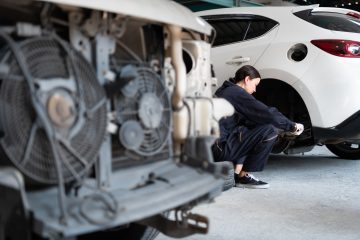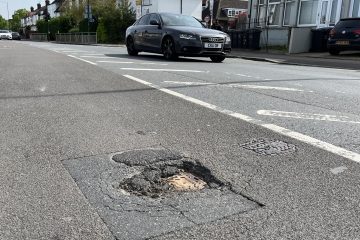Less than half of European motorists conduct the recommended check of tyre pressures at least once per month, according to a new survey commissioned by Apollo Tyres.
The company believes that as drivers are unaware of the importance of tyre pressures, and also other checks required to ensure good tyre safety, the industry needs to help educate, and help motorists realise what they need to do in order to keep their tyres in the best condition possible, and replace them as soon as they notice something wrong.
Of the 6,000 motorists polled, just 8% said they check their tyre pressures weekly, while 10% said once per fortnight, and 29% once per month.
Apollo Tyres has highlighted the advice that drivers check their tyre pressures at least once a month. However, many seem to do so much less frequently. Of all respondents, 24% say they check once per quarter, while 13% checked once every six months. Only 5% say they complete a check just once a year, and 5% admitted they never check their tyre pressures.
Importance of tyre pressures
Tyre under-inflation reduces vehicle stability, accelerates tyre wear and increases fuel consumption. If the tyre pressure is very low the tyre can overheat, causing irreparable damage. Meanwhile, excess tyre pressures reduce driving comfort and safety because the portion of the tyre in contact with the road surface will be smaller.
“Tyre pressures should ideally be checked every 14 days, and as a minimum at least once a month and always before a long journey,” said Yves Pouliquen, Group Head of Sales and Marketing at Apollo Tyres. “Drivers should also periodically check the pressure of the spare tyre so it can be relied upon in the event of an emergency, noting that these tyres often need to operate at a higher pressure.”
Apollo Tyres advises that pressures should only be checked when the tyres are cold (at least two hours after the most recent journey), and drivers should set the pressure to the level recommended by the car manufacturer.
“If you do not have the instruction manual to hand, you can typically find the recommended tyre pressures on the B-pillar beside the driver or inside of the tank filler flap,” added Pouliquen. “It’s important to note that pressures will often be different from front to rear, to account for the vehicle’s fixed distribution of weight and to allow for any temporary increase in load – for example when carrying multiple passengers or luggage.”
Checking for tread wear and tyre damage
Tyre and vehicle manufacturers also recommend that owners conduct regular checks of tread depth, to ensure grip and traction is maintained. However, in the Apollo Tyres survey, a significant 11% say they never conduct such checks. Among those that do assess tread depth, the frequencies cited most often are once per quarter (20%) and once per month (18%).
A significant majority (84%) say they check the sidewall and tread of their tyres for damage, although the frequency of these checks varies considerably. Monthly checks are the most common (21%), followed by quarterly checks (19%). 12% say they only assess sidewall and tread for damage once per year or less, while 12% never carry out such checks.
While the legal minimum tread depth in Europe is 1.6mm, Apollo Tyres advises to replace tyres when the tread depth falls to 2mm. The tread main grooves on a tyre have a Tread Wear Indicator (TWI); when the tread is worn down to these indicators, the tyre has reached the minimum legal level.
Pouliquen adds: “There is clearly a lack of understanding among motorists about what kind of checks should be conducted, and with what regularity. The onus is upon the tyre industry as a whole – manufacturers, retailers and fitters – to provide additional ongoing guidance and support to consumers.”



